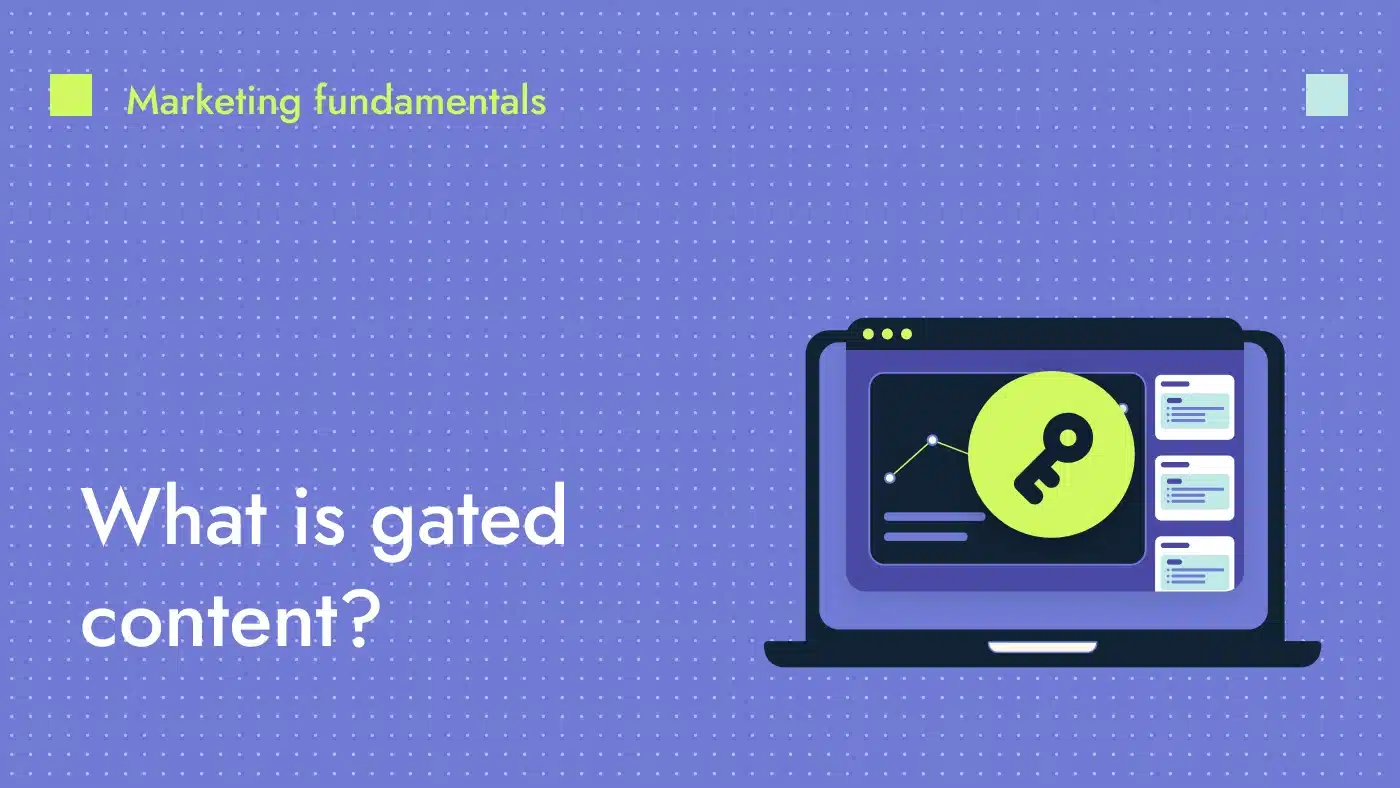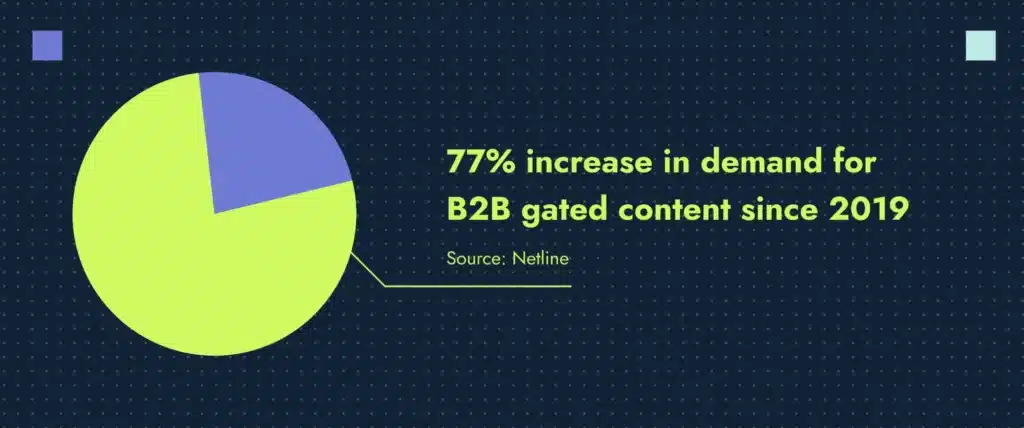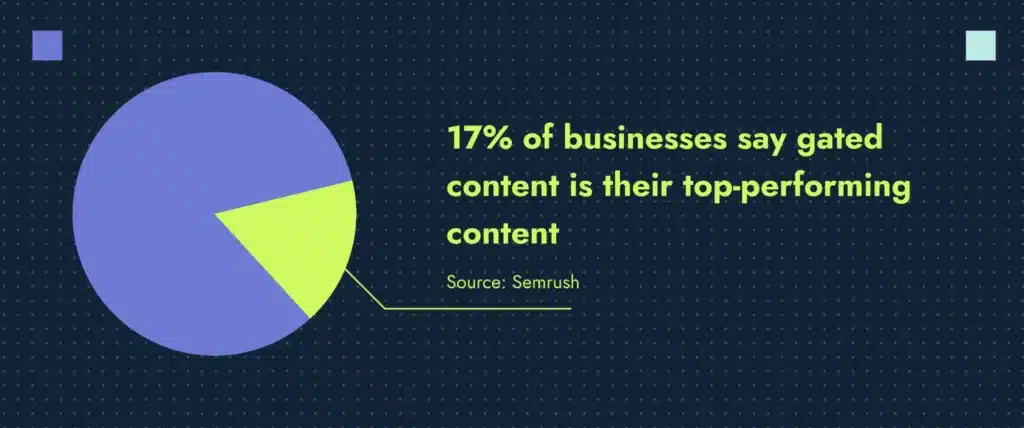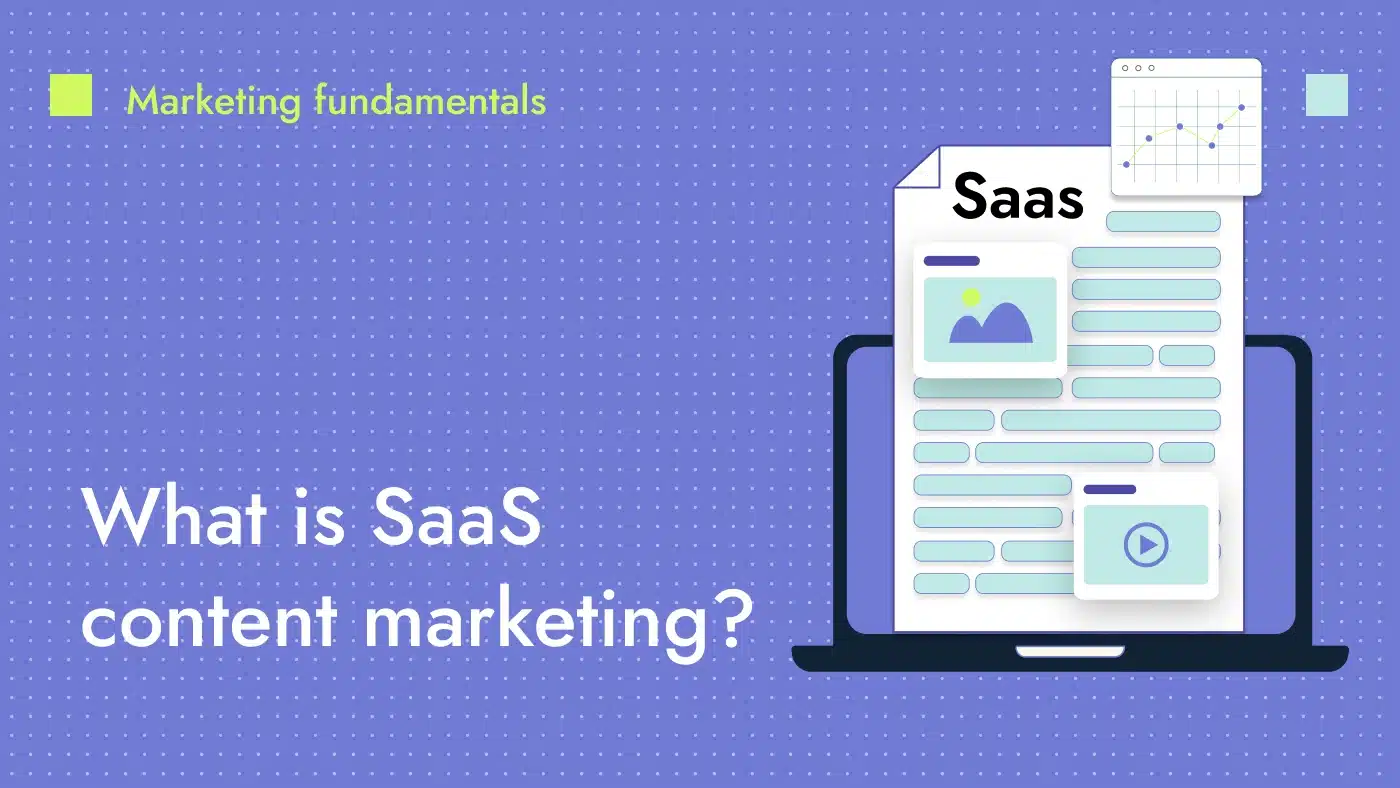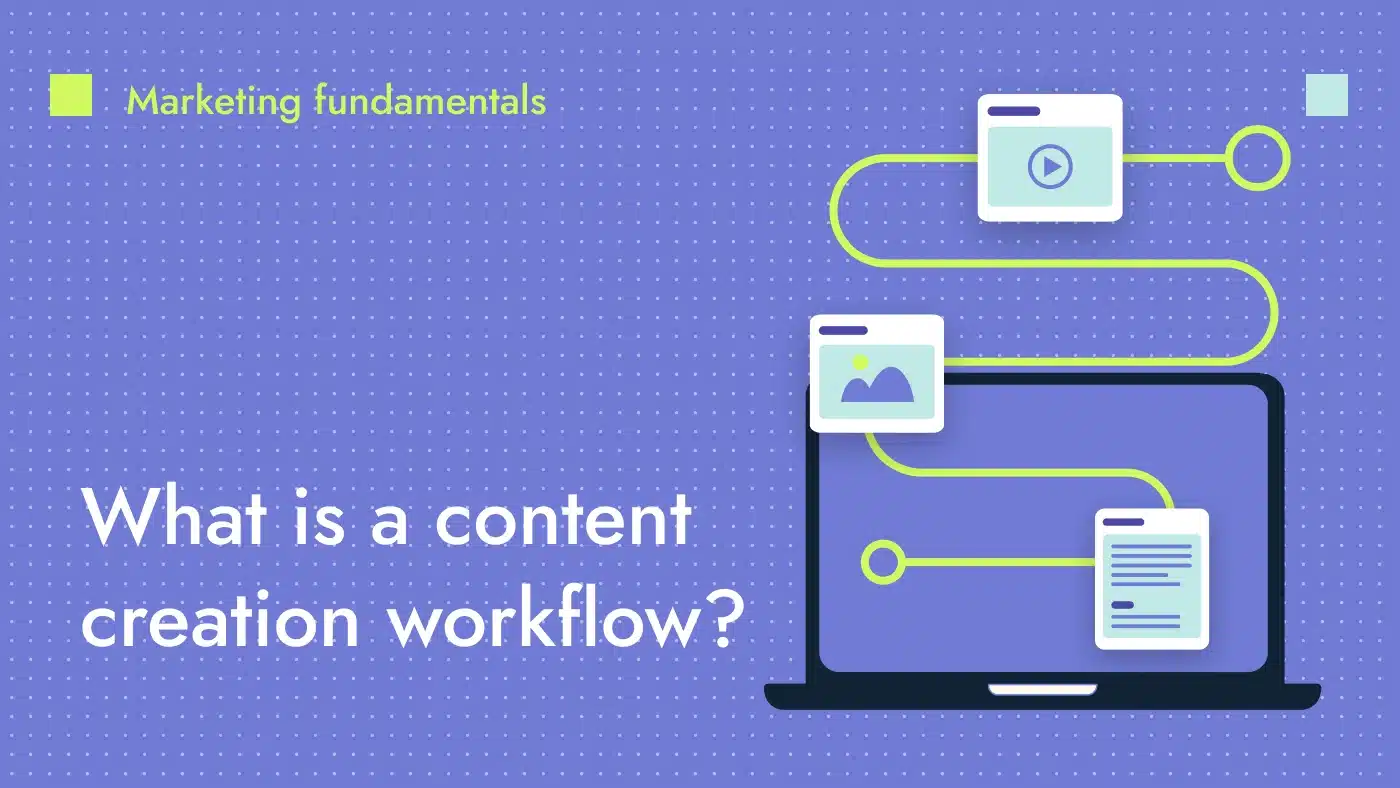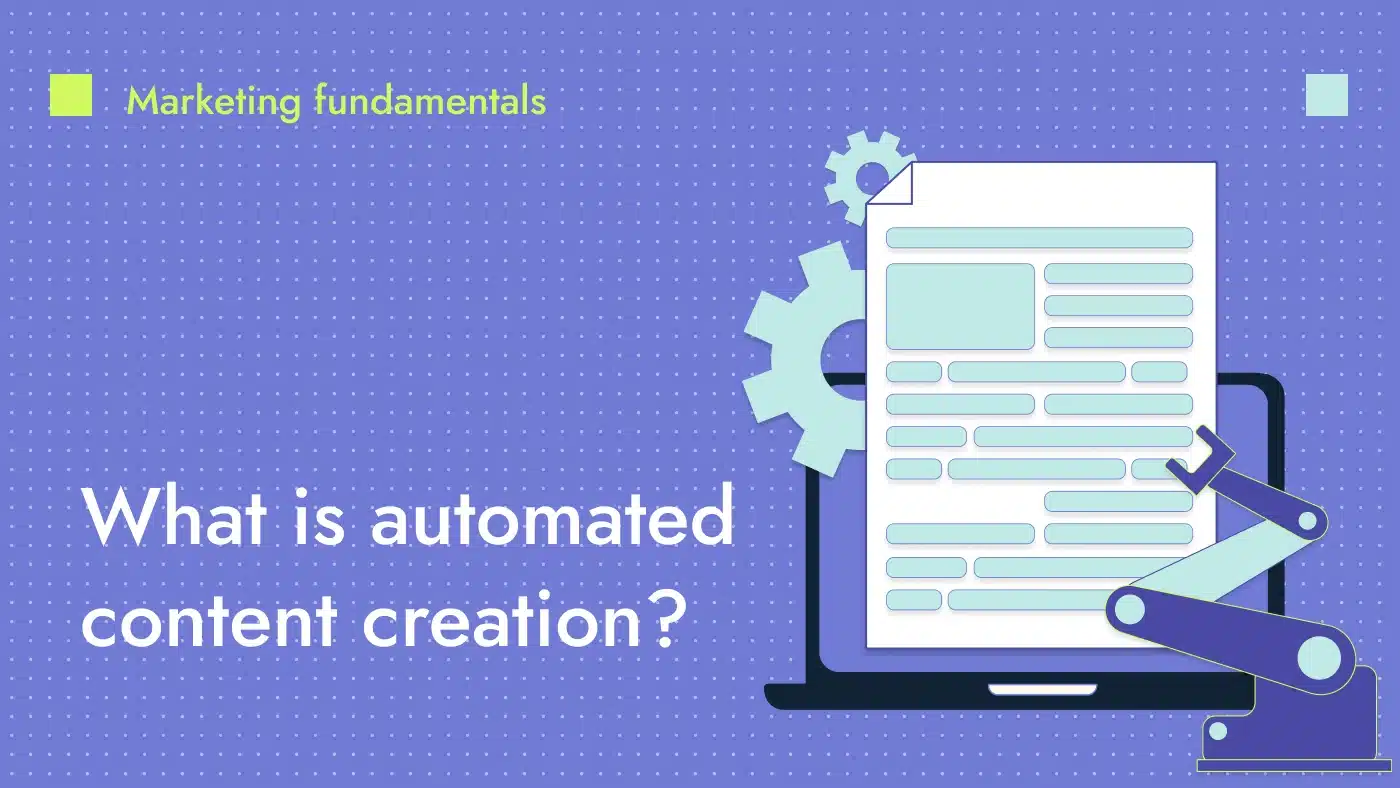Gated content refers to digital content that is placed behind a form or data collection barrier. In other words, website visitors are required to submit personal information, such as an email address or name, in order to access the content. Gated content examples include eBooks, whitepapers, case studies, webinars, and product demo videos.
This strategy is widely used across B2B marketing. Gated content serves as a valuable lead magnet mechanism that enables marketers to collect first-party data from prospects. In fact, 65% of B2B marketers gate “valuable” thoughts and ideas, according to a survey by FINITE.
In practice, gating content offers a value exchange. Users receive in-depth, informative, and actionable resources, while organizations can collect data that supports future outreach initiatives. This data can then be used to personalize follow-up email marketing, which aligns with a broader gated content strategy.
This method works especially well in industries where sales cycles are longer and decisions involve multiple stakeholders.
Gated content examples
Different types of gated assets serve different goals within the buyer journey:
- Whitepapers: Share deep insights and proprietary research
- eBooks: Provide educational resources in long-form format
- Webinars: Offer real-time learning and interaction
- Templates/tools: Deliver practical, repeatable value
- Case studies: Highlight customer success using real data
- Product demos: Showcase features to warm leads pre-sale
Choosing the right gated asset depends on your audience’s intent. Match the content type to the stage of the funnel — awareness, consideration, or decision — to maximize conversion and engagement.
🧠 Thinking of building a resource center for your site? Here’s how to do it right — from layout and filters to SEO and conversion rate tips.
Gated vs ungated content: Pros of each format
The core difference between gated and ungated content lies in access. Gated content requires users to submit personal information (like an email or name) before viewing, while ungated content is publicly accessible with no form or barrier.
Each format offers unique marketing advantages, depending on the campaign objective:
Benefits of gated content:
- Captures user information for lead generation
- Helps qualify prospects
- Enables personalized follow-up communication
Benefits of ungated content:
- Improves SEO and organic visibility
- Builds brand awareness and authority
- Encourages social sharing and engagement
🗓️ Not sure where to start with your content calendar? Here’s a guide to building one that supports your strategy, not just your schedule.
When should you gate content?
Creating gated content works best during the middle to bottom of the sales and marketing funnel, when users are already aware of a problem and actively looking for solutions.
- Top-of-funnel (TOFU): Use ungated blogs, social posts and explainer videos
- Middle-of-funnel (MOFU): Offer gated eBooks, webinars or whitepapers
- Bottom-of-funnel (BOFU): Provide gated case studies, ROI calculators or product demos
Avoid gating too early. Users at the awareness stage are less likely to convert behind a form. According to NetLine, demand for gated B2B content increased by 14.3% year-over-year, marking a 77% growth since 2019.
How to decide if I should be gating content
Not all content should be gated. Marketers should assess the perceived value of the content before deciding to restrict access.
Ask three questions:
- Does the content solve a complex or high-value problem?
- Is it unique or exclusive in any way?
- Would a user be willing to exchange information to access it?
If yes, it’s a strong candidate for gating. Also factor in:
- How competitive the topic is
- How long the asset took to create
- Whether the content provides value that isn’t readily available elsewhere
According to a report by Semrush, 17% of marketers and business owners said gated content was their top-performing content. But if the content is broadly available in search, it may be better used ungated.
Content gating: Best practices for marketers
If you decide to gate your content, there are a few best practices to keep in mind:
- Keep forms short: Ask only for essential information (name, email, company)
- Make value clear: Clearly state what the user will get and why it matters
- Use progressive profiling: Gradually collect more information over time
- Test formats: A/B test landing pages, headlines and form placements
- Set expectations: Tell users when and how the content will be delivered
- Avoid over-gating: Too many forms on your site can reduce user trust
Avoid gating content too early or gating low-value material. If users don’t feel the content is worth the exchange, it can damage trust and even hurt brand perception.
Contact us to build a high-performing gated content strategy
When done right, content gating helps B2B marketers engage high-intent prospects and move them through the funnel. From awareness to decision, each gated asset should provide specific value tied to a user’s goal.
Ready to implement a data-backed gated content approach that aligns with your business objectives? Explore our editorial services and let’s help you plan, write, design and distribute gated and ungated assets that align with your buyer journey.
Contact us today and let’s work together to turn content into qualified opportunities.


